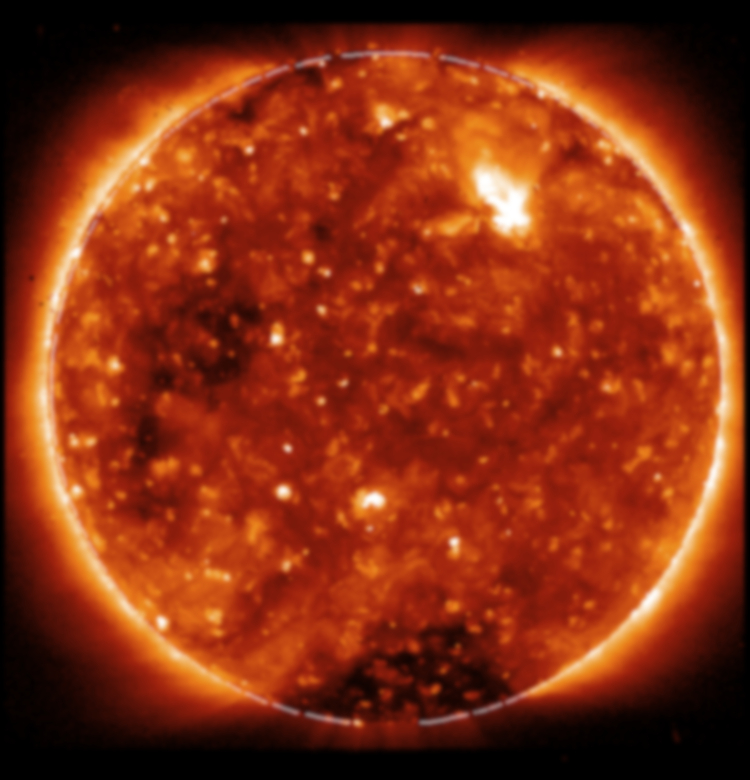
 Credit: Hinode Team; SAO/NASA/JAXA/NAOJ
Credit: Hinode Team; SAO/NASA/JAXA/NAOJ
Serene Sun
What's going on with the sun? During the 11-year-long solar cycle (sometimes called the "sunspot cycle") magnetically generated solar phenomena (like sunspots, the size of the solar corona, or the the number of solar flares) rise and fall. All these phenomena are driven by the strength of the solar magnetic field, which gets "screwed up" by the differential rotation of the sun every 11 years. The sun is currently in the minimum of its activity cycle. But this minimum is unusual. Currently, sunspot counts are at a 50-year low, the lowest since the start of the space age. The image above shows a recent X-ray image of the sun by the Hinode observatory, showing the state of the solar corona, the outer atmosphere of the sun that is heated by the solar magnetic field to temperatures of millions of degrees. A recent view of the solar disk shows no spots whatsoever - a blank sun. The sun's on pace to rack up 290 spotless days by the end of December 2009. While this is unprecedented since the dawn of the space age, the solar minima of the late 19th and early 20th centuries were similarly spotless.
Published: April 6, 2009
<
HEA Dictionary ● Archive
● Search HEAPOW
● Other Languages
● HEAPOW on Facebook
● Download all Images
● Education ● HEAD
>
Each week the HEASARC
brings you new, exciting and beautiful images from X-ray and Gamma ray
astronomy. Check back each week and be sure to check out the HEAPOW archive!
Page Author: Dr. Michael F. Corcoran
Last modified Tuesday, 27-Feb-2024 10:08:21 EST


